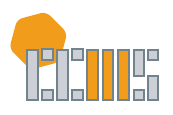Abstract / Synopsis
Mathematics employs a formal language where symbols, verbs, and nouns serve to express terms, concepts, and rules that concatenate to definitions, problem-solving procedures, and proofs. Taken together these constitute the expository language of mathematics found in journals, textbooks, and demonstrations. As a communication given to informing, there are epistemological and ethical considerations that deserve examination. For in keeping with the commitment to an aesthetic of concision promulgated by tradition, the formal presentation language and style of mathematics, while valuable in furthering the body of knowledge, provides only the conclusion of an inquiry, completely excluding the language of investigation that informed the many steps of decision making involved in the process, so that little if any insight into the creative process is made available. Here we explore this problem of communication in the context of mathematics presented to students early in their education as well as at university level. The argument is made that the language of investigation -- the heuristic actions instrumental for their formulation -- ought to accompany the language of formal demonstration so as to provide a communication that is in the best interests of all students and members of the mathematics profession.
DOI
10.5642/jhummath.OOTE2363
Recommended Citation
Marshall Gordon, "The Formal Presentation Language of Mathematics and Communication Ethics," Journal of Humanistic Mathematics, Volume 12 Issue 2 (July 2022), pages 28-48. DOI: 10.5642/jhummath.OOTE2363. Available at: https://scholarship.claremont.edu/jhm/vol12/iss2/5
